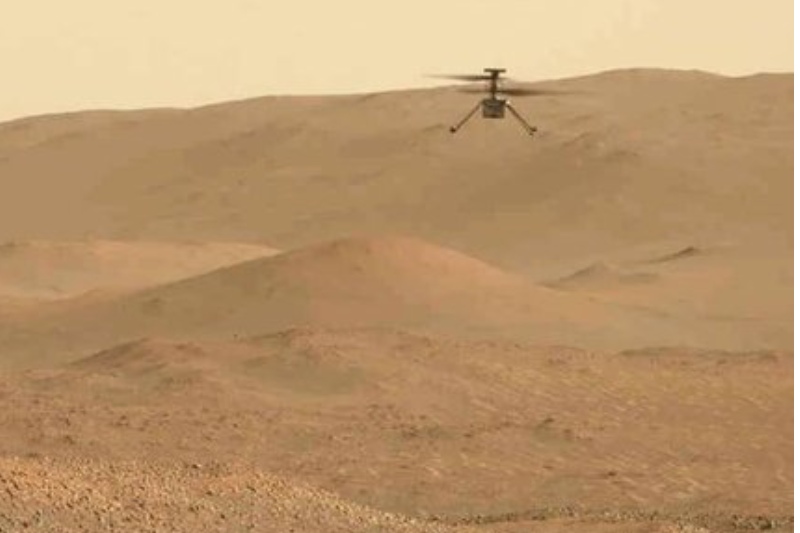Using Remote Imaging, Scientists Find the Fractured Rotor Blade of the Damaged Mars Helicopter

In the ongoing story of NASA’s involvement on Mars, they just announced that they had found the damaged rotor blade that the damaged Mars helicopter had lost.
About fifty feet to the west of the little aircraft, they claim that a significant chunk of the blade has been seen laying on the dune-like surface.
Though Ingenuity completed 72 flights, a rotor malfunction left it trapped in the Jezero Crater.
February 24, the 1,072nd Martian day of the mission, saw the taking of close-up photos of the scene by NASA’s Perseverance Mars rover’s Remote Microscopic Imager (RMI) camera.
These images form a mosaic, with the helicopter positioned to the right of the blade, positioned at an angle close to the peak of a sand ripple.
The Ingenuity team is thinking about a notion that the blade broke off during the helicopter’s 72nd and last flight on January 18, following the rotorcraft’s impact with the Martian surface.
“Able to spot a softball from nearly a mile away, the RMI allows scientists to take images of details from a long distance. It also provides fine details of nearby targets zapped by SuperCam’s laser,” reported NASA.
“History-making Ingenuity Mars Helicopter has ended its mission at the Red Planet after surpassing expectations and making dozens more flights than planned,” the space agency declared on January 25th, announcing the conclusion of the mission for Ingenuity.
The first airplane on another globe flew from the Martian surface for nearly three years, having been originally intended as a technological demonstration capable of doing up to five experimental test flights over a thirty-day period.
With almost two hours of total flying time, Ingenuity traveled over 14 times further than scheduled.
One of the main goals of Perseverance’s Mars mission is astrobiology, which includes looking for evidence of extinct microbes. The rover will be the first mission to gather and cache Martian rock and dust, analyze the planet’s geology and previous climate, and open the door for future human exploration of the Red Planet.
These sealed samples would be taken from the surface of Mars by later NASA missions working with ESA (the European Space Agency), and they would then be brought back to Earth for further examination.
NASA’s Moon to Mars exploration strategy, which includes the Artemis moon missions to assist get ready for human exploration of the Red Planet, includes the Mars 2020 Perseverance mission.